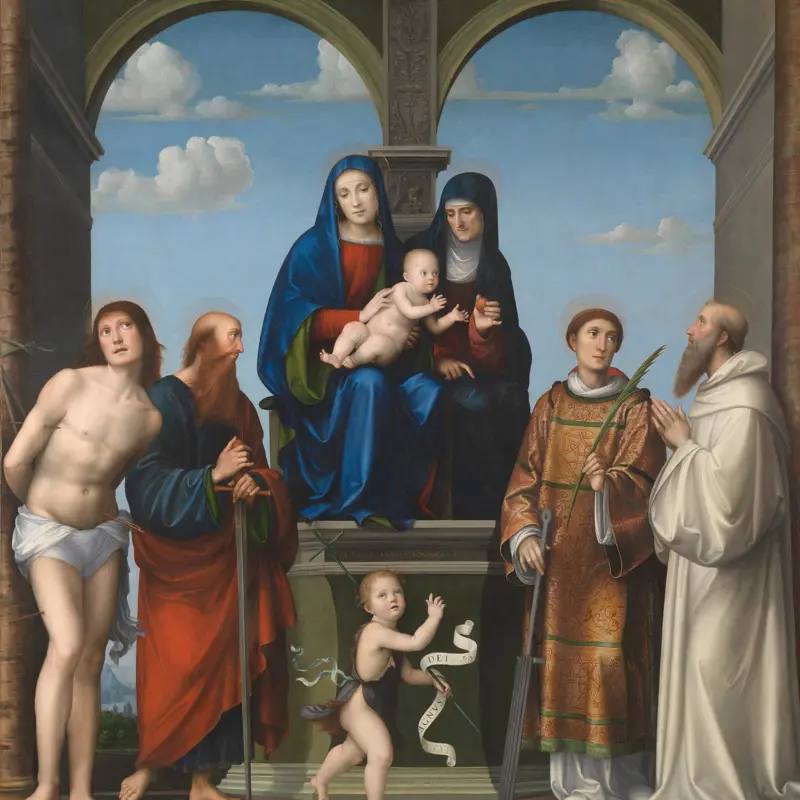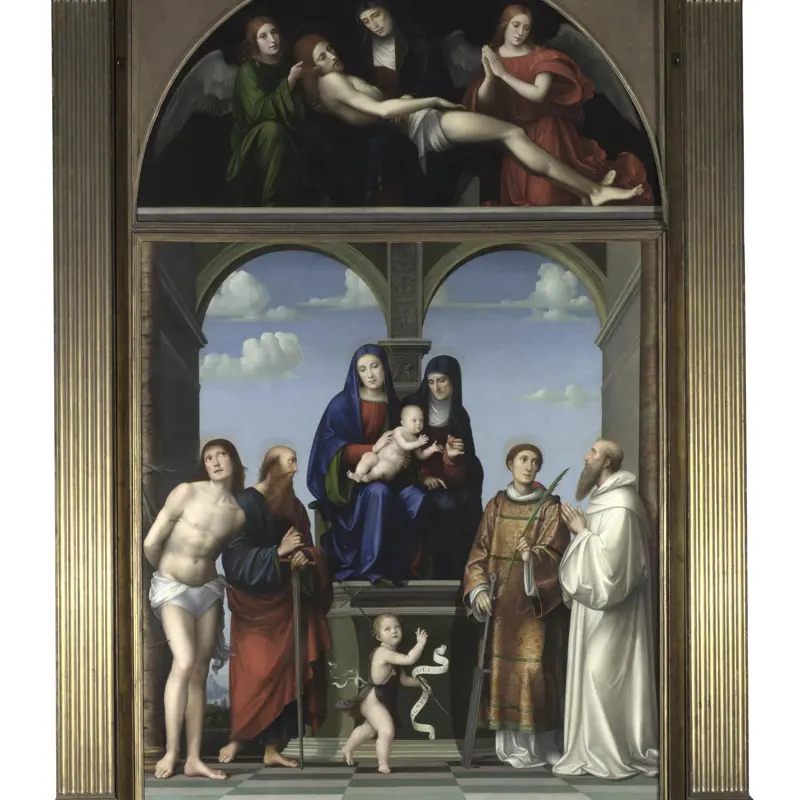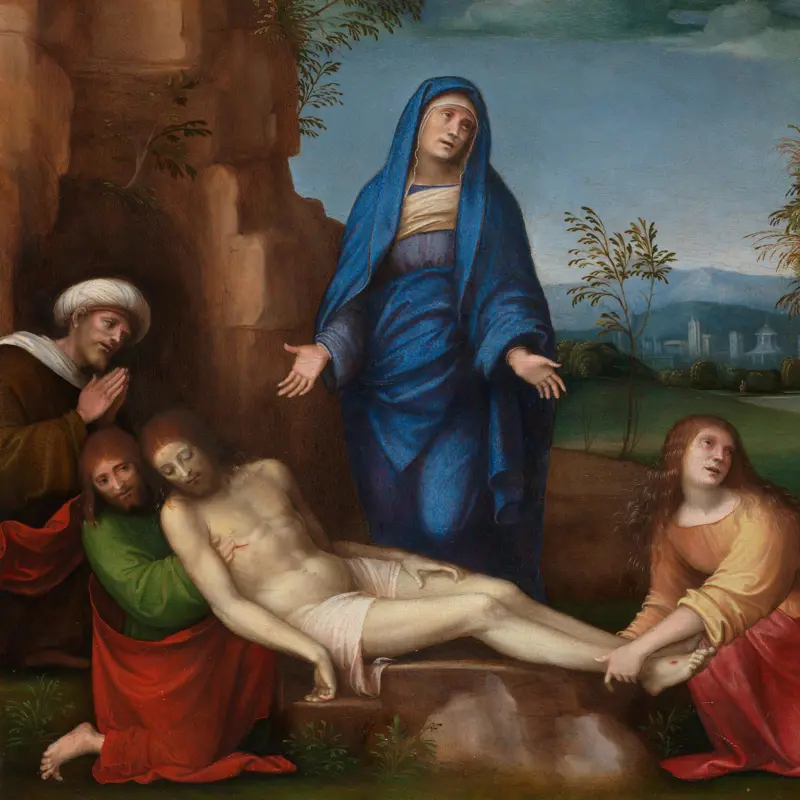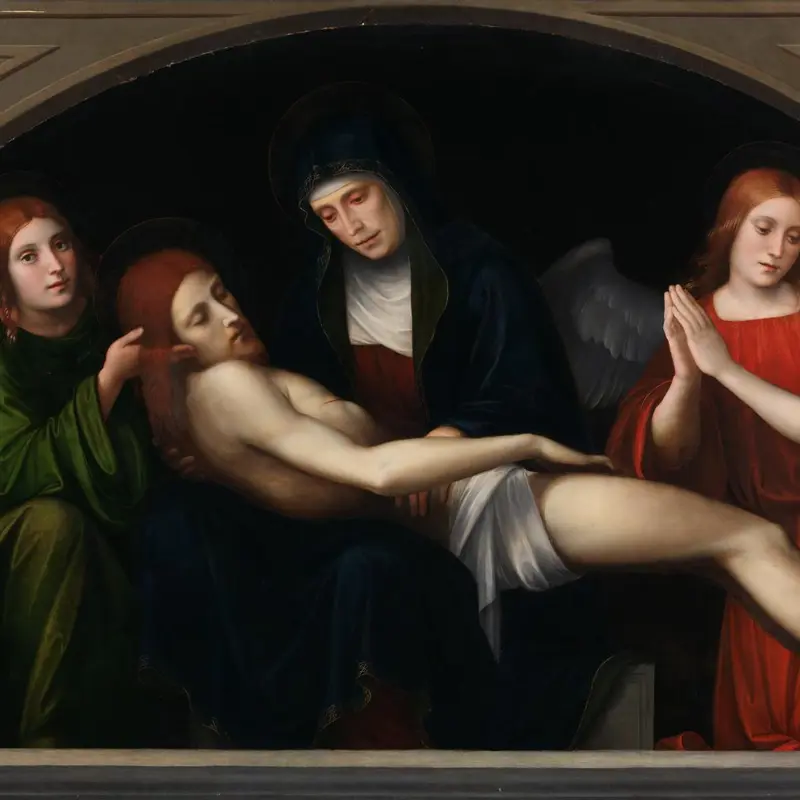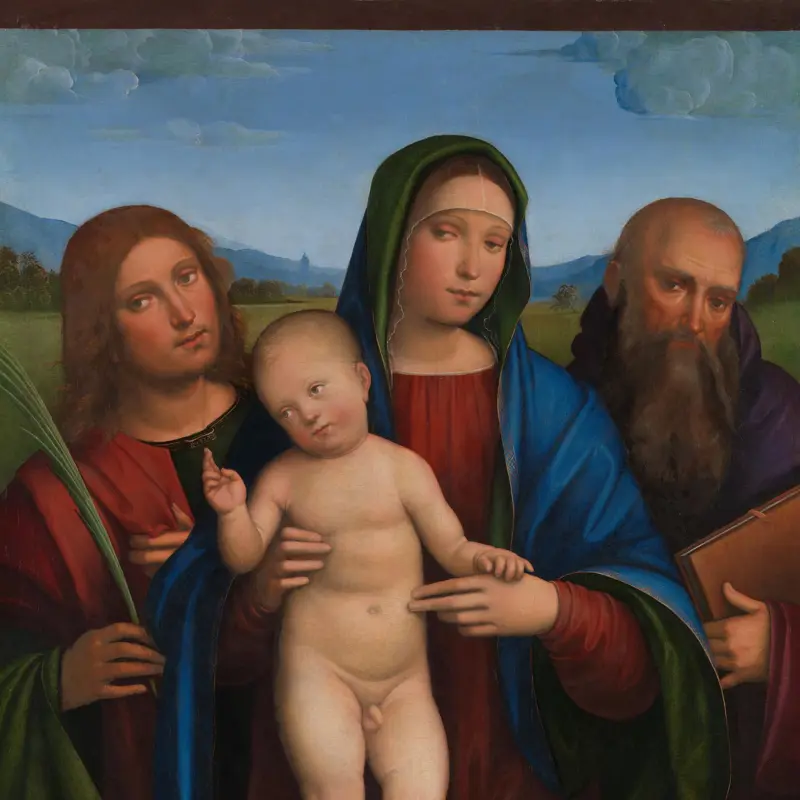Francesco Francia, 'Bartolomeo Bianchini', about 1493-5
About the work
Overview
Bartolomeo Bianchini was a nobleman and humanist scholar from Bologna – his name is written on the letter he holds. This is the earliest known use of a letter as a means of naming the sitter in an Italian portrait.
The painted ledge makes it appear that we are looking through a window. Bianchini’s hand seems to project over the ledge, creating the illusion that our world and the painted world are continuous, making the portrait seem more real. Ledges like this are used for the same effect in many earlier Netherlandish portraits .
The lighting from the right is unusual, suggesting that this portrait might once have been paired with a companion picture lit from the left – perhaps a portrait of the man who wrote the letter. This portrait seems to be based on the Portrait of a Man with a Ring by Francesco del Cossa (Thyssen-Bornemisza Museum, Madrid).
Key facts
Details
- Full title
- Bartolomeo Bianchini
- Artist
- Francesco Francia
- Artist dates
- about 1447 - 1517
- Date made
- about 1493-5
- Medium and support
- oil on wood
- Dimensions
- 56.5 × 40.6 cm
- Acquisition credit
- Salting Bequest, 1910
- Inventory number
- NG2487
- Location
- Room 14
- Collection
- Main Collection
- Previous owners
- Frame
- 19th-century Italian Frame
Provenance
Additional information
Text extracted from the ‘Provenance’ section of the catalogue entry in Giorgia Mancini and Nicholas Penny, ‘National Gallery Catalogues: The Sixteenth Century Italian Paintings’, vol. 3, ‘Bologna and Ferrara’, London 2016; for further information, see the full catalogue entry.
Bibliography
-
1951Davies, Martin, National Gallery Catalogues: The Earlier Italian Schools, London 1951
-
1986Davies, Martin, National Gallery Catalogues: The Earlier Italian Schools, revised edn, London 1986
-
2001
C. Baker and T. Henry, The National Gallery: Complete Illustrated Catalogue, London 2001
-
2016Mancini, Giorgia, and Nicholas Penny, National Gallery Catalogues: The Sixteenth Century Italian Paintings, 3, Bologna and Ferrara, London 2016
About this record
If you know more about this work or have spotted an error, please contact us. Please note that exhibition histories are listed from 2009 onwards. Bibliographies may not be complete; more comprehensive information is available in the National Gallery Library.

